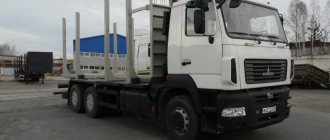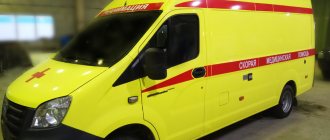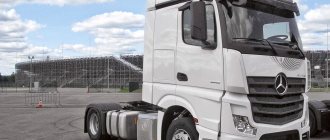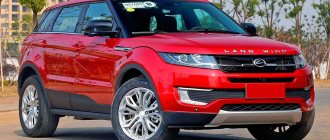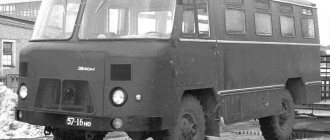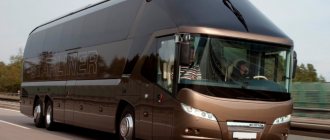Author: Oleg
March 17, 2022 09:12
Community: Autoworld
Tags: auto bus auto world cars retro technology school bus
2061
17
The first vehicles for transporting schoolchildren in the USA and Canada appeared in the second half of the 19th century. But then these were horse-drawn carts that were not protected from bad weather. Let's see what special vehicles for delivering children to educational institutions around the world looked like before and how they have changed over time?
0
Source:
See all photos in the gallery
Wayne Corporation (formerly Wayne Works)
The oldest American bus manufacturer was founded in Indiana back in 1837 as a manufacturer of horse-drawn carriages. Then, like many others, in 1914 he began installing bodies on automobile chassis. In 1927 they became metal, and almost immediately Wayne began glazing them.
At various times the company changed owners, they were Divco-Wayne, Boise Cascade, Indian Head and Thyssen-Bornemisza.
By 1957, products were collected in 60 countries. The corporation was a leader in the production of school buses, in addition to them they produced city and tourist vehicles, special vehicles and delivery vans.
The school series was distinguished by increased safety (Wayne began installing reinforcing bars in bodies back in 1930) and included at different times the Busette, Chaperone, Papoose, Lifeguard, Lifestar, RD 9000 families. Unable to withstand the drop in demand, Wayne closed in 1992.
Carpenter Body Company
Over the years (Ralph H. Carpenter Body Company, Carpenter Body Works, Carpenter Manufacturing Company, Carpenter Industries, Crown by Carpenter) was one of the main manufacturers of school buses. The company, founded by R. Carpenter in Indiana in 1919, produced its first car four years later. Previously, it had produced horse-drawn carriages for transporting schoolchildren, so it had no problem adapting superstructures to car chassis.
It is noteworthy that it was on Carpenter buses that the folding stop signs, so famous today, first appeared. They were made in the form of reclining fists with the index finger painted red.
For the next 60 years, the company produced the typical bonneted school buses, the Cadet, Classmate and Classic.
In 1998, Carpenter was acquired by a manufacturer of chassis, including buses, Spartan.
The school flagship was the cabover Chancellor RE on the Spartan chassis. Its features included air suspension on both axles and a flat floor, as well as wheels reduced to 19″ in diameter.
However, in 2001, the new owner, due to the market crisis, decided to close the production of school cars.
IC Corporation
Integrated Coach (formerly AmTran, Ward Body Works) is a bus manufacturer wholly owned by Navistar International.
Its history begins in 1933, when Ward Body Works was founded in Arkansas. It was known both for school buses and for its innovations - dating back to the 1960s. was one of the first to use computers from IBM in production. However, this did not save her from bankruptcy. In 1980, with the help of then-Governor Bill Clinton, its assets were transferred to a new corporation, American Transportation (AmTran). By 1995, control of it completely passed to the truck and chassis manufacturer, Navistar International.
Then the Senator, Genesis and Vanguard models were produced on Ford, GM or most often International Harvester chassis.
Currently, four series are being produced - school, special, commercial and intercity. All are built on units of the new owner, include several models in each group, including school ones: bonneted AE, BE, CE with a capacity of 30–77 schoolchildren, cabover RE - 84 passengers; All series are offered in gas-diesel or hybrid versions.
Our fleet
- Mercedes Viano (VIP) Seats: 6 5 cars from 849 RUR/hour
More details Order - Volkswagen Caravel Seats: 7 3 cars from 550 rub/hour
More details Order
- Hyundai H-1 Seats: 7 5 cars from 799 RUR/hour
More details Order
- Ford Transit Tourneo Seats: 9 2 cars from 749 rub/hour
More details Order
- Mercedes Sprinter 319 CDI Seats: 10 3 cars from 799 RUR/hour
More details Order
- Ford Transit 420 Seats: 15 3 cars from 789 rub/hour
More details Order
- Peugeot Boxer Seats: 18 2 cars from 998 RUR/hour
More details Order
- Mercedes Sprinter Classic Seats: 19 4 cars from 900 rub/hour
More details Order
- Ford Transit Seats: 19 3 cars from 799 RUR/hour
More details Order
- Volkswagen Crafter Seats: 19 2 cars from 899 RUR/hour
More details Order
- Mercedes Sprinter Seats: 20 5 cars from 999 rub/hour
More details Order
- Mercedes Sprinter VIP Seats: 20 3 cars from 1097 RUR/hour
More details Order
- Mercedes Sprinter Black Seats: 20 2 cars from 1199 RUR/hour
More details Order
- Toyota Coaster Seats: 25 2 cars from 1190 rub/hour
More details Order
- Hyundai County Seats: 27 8 cars from 1190 rub/hour
More details Order
- Higer 6885 Seats: 30 2 cars from 1297 RUR/hour
More details Order
- Youtong ZK6831H Seats: 30 from 1297 RUR/hour
More details Order
- Higer 6885Q Seats: 35 3 cars from 1349 rub/hour
More details Order
- Higer 6129 Seats: 42 from 1498 RUR/hour
More details Order
- King Long 6127 Seats: 45 from 1549 rub/hour
More details Order
- Neoplan N516 Seats: 47 from 1549 rub/hour
More details Order
- Mercedes Travelo Seats: 48 from 1999 rub/hour
More details Order
- Higer KLQ6119 Seats: 48 from 1398 RUR/hour
More details Order
- Man Lion Coach Seats: 50 from 1799 RUR/hour
More details Order
- Volvo 9700H Seats: 55 from 1999 rub/hour
More details Order
- Volvo B12 Seats: 55 from 1999 rub/hour
More details Order
- Setra S315 HD55 Seats: 55 from 1949 rub/hour
More details Order
- Setra S419 Seats: 60 from 1999 rub/hour
More details Order
- Golden Dragon XML811 Seats: 100 from 1998 rub/hour
More details Order
- Buses for school excursions
- Order a bus to transport children
- Bus for transporting schoolchildren
Thomas Built Buses, Inc.
The North Carolina-based manufacturer of school and city buses is wholly owned by Freightliner and, through it, Daimler AG.
Perley A. Thomas, an employee of the Brill bus company, founded the company in 1916 and began producing streetcars. Only in 1934 the first 10 city cars were produced. Two years later, the company began producing school buses and immediately filled an order for 200 units with wooden bodies. But already in 1938 the company introduced its first welded body. In the post-war years, Thomas was one of the six largest in the United States.
In 1980, the smallest A-class model appeared under the name Minotour (still in production). In 1988, it introduced its own chassis for the front- and rear-engine Saf-T-Liner bus (before that, all chassis were purchased from Ford, Freightliner, GMC, International and even Volvo).
In 1998, the company was bought by Freightliner, and since then almost all buses have been assembled on new chassis, primarily the FL 65.
The company's latest innovation was the appearance of the lightest school MyBus series on a GM chassis in 2009.
Now the Thomas Built Buses program looks like this: hooded MyBus, Minotour and Saf-T-Liner C2 with a capacity of 30–81 passengers, hooded Saf-T-Liner EFX, HDX for 56–90 seats.
Ophthalmologist's opinion
“This yellow is not a pure spectral yellow,” said Ivan Schwab, a clinical spokesman for the American Academy of Ophthalmology. “The best way to describe color is wavelength,” he said. The wavelength of the popular school bus color is "straight in the middle" of the peak wavelength that stimulates the photoreceptor cells that our eyes use to perceive red and green.
— Advertising —
Red and green photoreceptor cells, or "cones" as they are called, are the two most common cones in our eyes. Schwab says, “If you take a wavelength of one color... and hit just one cone with it, you'll get x number of signals to the brain. But if that wavelength stimulates two cones, you'll get twice as many signals to the brain. The color we call School Bus Yellow fits both peaks equally.”
So, although they don't all fully understand the science behind it, the color that Cyr and his colleagues chose at the 1939 conference made the school bus more visible to other drivers. “And the bus is very big,” Schwab added.
Like London's old black taxis and the popular red double-decker buses, America's yellow school buses have remained the same for many years while other modes of transport have undergone dramatic changes. This is largely due to the school bus's amazing safety record.
